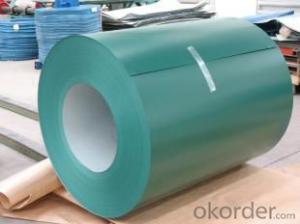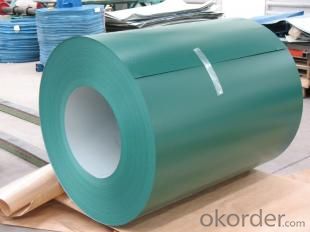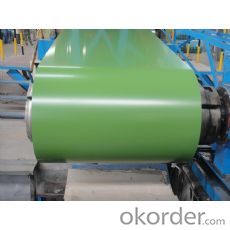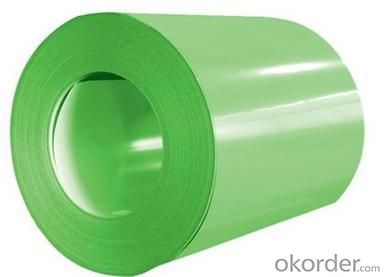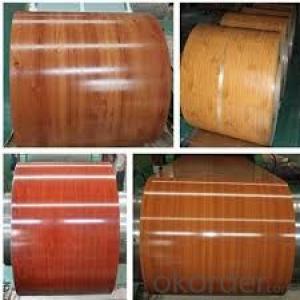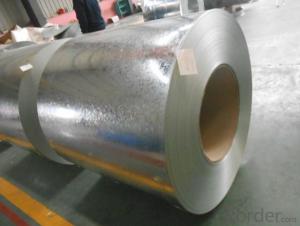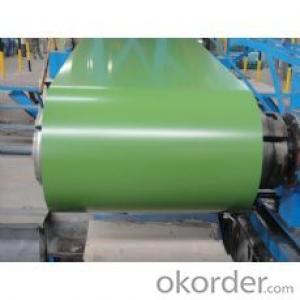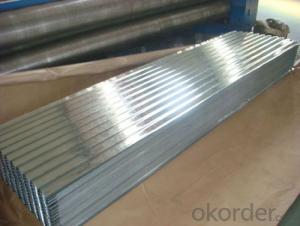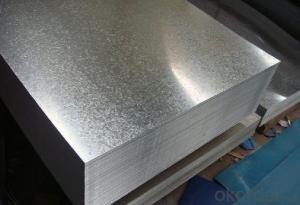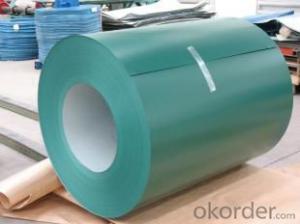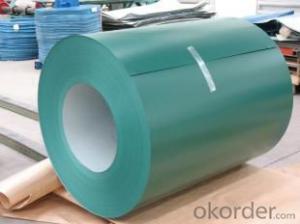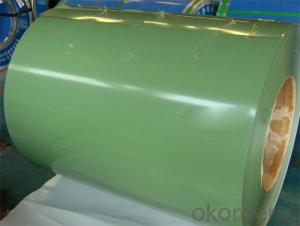Pre-Painted Galvanized Steel Sheet/Coil High Quality Green Color
- Loading Port:
- Shanghai
- Payment Terms:
- TT OR LC
- Min Order Qty:
- 100 m.t.
- Supply Capability:
- 20000 m.t./month
OKorder Service Pledge
OKorder Financial Service
You Might Also Like
1. Pre-Painted Galvanized/Aluzinc Steel Coil Description:
With GI as base material, after pretreatment (degrease and chemical treatment ) and liquid dope with several layers of color, then after firing and cooling, finally the plate steel is called pre-painted galvanized (aluzinc) steel. Pre-painted galvanized steel is good capable of decoration, molding, corrosion resistance. It generally displays superior workability, durability and weather resistance.
2.Main Features of the Pre-Painted Galvanized/Aluzinc Steel Coil:
• Excellent process capability
• Smooth and flat surface
• Workability, durability
• Excellent heat resistance performance
• High strength
• Good formability
• Good visual effect
3.Pre-Painted Galvanized/Aluzinc Steel Coil Images
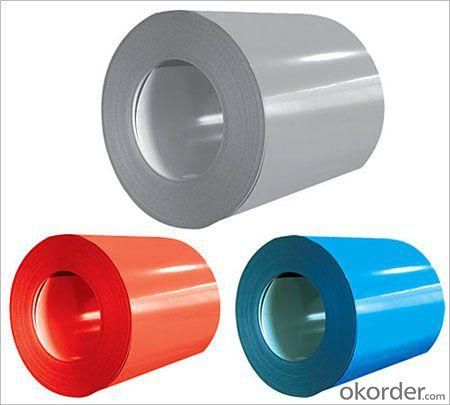
4.Pre-Painted Galvanized/Aluzinc Steel Coil Specification
Standard: AISI, ASTM, BS, DIN, GB, JIS
Grade: DX51D, DX52D
Thickness: 0.17-2.0mm
Brand Name: KMRLON
Model Number: coil
Type: Steel Coil
Technique: Cold Rolled
Surface Treatment: Coated
Application: Boiler Plate
Special Use: High-strength Steel Plate
Width: 20-1250mm
Length: customized
commoidty: pre-painted galvanized steel coil
Thickness: 0.13-4.0mm
width: 20-1250mm
zinc coating: 40-180g/m2
printing thickness: top side: 20+/-5 microns, back side: 5-7 microns
color: all RAL color
surface treatment: color coated
coil weight: 4-7 tons
coil ID: 508/610mm
packaging: standard seaworthy packing
5.FAQ of Pre-Painted Galvanized/Aluzinc Steel Coil
1. What’s the application of this product?
Roof, roof structure, surface sheet of balcony, frame of window, etc.
2. What’s the brand of the paint?
We use the best brand of all of the word—AKZO.
3. How to guarantee the quality of the products?
We have established the international advanced quality management system,every link from raw material to final product we have strict quality test;We resolutely put an end to unqualified products flowing into the market. At the same time, we will provide necessary follow-up service assurance.
4. How long can we receive the product after purchase?
Usually within thirty working days after receiving buyer’s advance payment or LC. We will arrange the factory manufacturing as soon as possible. The cargo readiness usually takes 15-25 days, but the shipment will depend on the vessel situation.
- Q: My daughter wants a pair of steel toe cap boots for around the horses but wants them warm, so ideally fur lined etc. Does anybody know where I could purchase them as everywhere I look its only one or the other, cant get steel with fur lining. Very frustrating. I live in the uk. Many thanks.
- The steel toe cap wishes to be equipped for the duration of manufacture for the boots to arrive the desired standards. It could be nice if you looked at one of the PPE sites and see if you will see a pair that you may dye or paint.
- Q: Got small (.177) bb gun for fun with my son...From the manual:'Steel shot will fire at a higher velocity then lead shot with with the same muzzle energy. As a result, more caution is required when using steel shot because of a greater hazard of ricochet. Lead, because of its lower velocity, usually has less penetrating power and is less likely to ricochet.'Are you agree with that? ;)
- steel is made of iron mainly (and carbon) its density is 7.86 g/cm? approximately. and lead has density=11.4 g/cm?. so, if have same volume and shape steel will have less mass and thus will have greater velocity for same muzzle energy. I agree the manual. for more information on ricochet
- Q: How are steel coils used in the production of steel locks?
- Steel coils are used in the production of steel locks as they provide the raw material needed for manufacturing lock components such as lock bodies, shackle, and tumblers. The steel coils are processed and shaped into various lock parts, which are then assembled to create the final product.
- Q: So I'm looking for some decently priced black motorcycle boots that have steel toes (and any additional protection) and look good in jeans. Pretty simple. Any recommendations?
- You don't need steel toes in a motorcycle. The top of the foot isn't where the danger comes from when injured in a motorcycle accident. Where you need the most protection is in the ankle and heel. The ankle twists and the heel and calf bang on the ground. You need some protection at the toes, but that is from the road impacting the toes and grinding against the boots as you slide. Any boots made for motorcyclists will do. Stay away from steel toed work boots - they are designed for a job site, not a motorcycle crash.
- Q: Can steel coils be customized in terms of size and specifications?
- Certainly! Steel coils can indeed be personalized in terms of size and specifications. Although steel coils are normally produced in standard sizes and specifications, they can be customized to fulfill particular requirements based on the customer's preferences. Customization may involve altering the dimensions of the coils in terms of width, length, and thickness, as well as modifying specifications such as the type of steel, surface finish, and coating. Through this process, steel coils can be tailored to suit various applications and industries, ensuring that they meet the specific requirements and performance standards of customers. Industries such as automotive, construction, manufacturing, and appliances often utilize customized steel coils, as precise sizes and specifications are essential for efficient and effective operations.
- Q: What are the different coating options for steel coils?
- Steel coils have multiple options for coating, each with its own purpose and benefits. Some commonly used coatings for steel coils include the following: 1. Galvanized Coating: Steel coils are immersed in molten zinc, resulting in a zinc layer on the surface. This coating offers excellent corrosion resistance and protects against rust. It is ideal for harsh environments and moisture exposure. 2. Galvannealed Coating: This coating combines galvanizing and annealing processes. After galvanizing, the steel coils are annealed to create a zinc-iron alloy layer. Galvannealed coating provides enhanced paintability, weldability, and corrosion resistance. 3. Aluminum-Zinc Alloy Coating: Also known as Galvalume, this coating involves applying an aluminum-zinc alloy to the steel coils. It offers excellent corrosion resistance and heat reflectivity, making it suitable for roofing, siding, and automotive parts. 4. Organic Coatings: These coatings are typically applied as a top layer over a base coat of galvanized or galvannealed coating. Examples include paints, lacquers, and powder coatings. Organic coatings provide additional protection against corrosion, UV rays, and abrasion while enhancing the aesthetics of the steel coils. 5. Chromate Conversion Coating: This coating is commonly used as a pre-treatment before applying organic coatings. It improves adhesion between the steel surface and the organic coating, ensuring better corrosion resistance. The choice of coating depends on factors such as the intended application, environmental conditions, desired appearance, and budget. Manufacturers and end-users should carefully consider these factors to select the most suitable coating option for their specific requirements.
- Q: How are steel coils used in the production of construction components?
- Steel coils are used in the production of construction components by being processed into various shapes and sizes, such as beams, columns, and plates. The coils are unwound and then cut, bent, or shaped to meet the specific requirements of the construction project. Additionally, the high strength and durability of steel make it a preferred material for construction, ensuring the components can withstand heavy loads and harsh environmental conditions.
- Q: Can I ever get my classical guitar reinforced so it can have steel strings on it?
- NO. A classical guitar is braced very differently than a steel-string acoustic. Plus the set-up is completely exceptional - the best way the nut is slotted, the best way the strings tie on the bridge, and so on. The anxiety of steel strings would pull the bridge and top off of a just right classical guitar. Although it's a mass-produced cheap person who would take the tension - you'll certainly not be capable to play it - the action on a nylon string guitar is far better in most cases. Who cares how long strings last - you're talking about $5-10 for a suite of strings. Changing strings is part of playing guitar.
- Q: How are steel coils inspected?
- Steel coils are inspected through a combination of visual examination, dimensional measurement, and non-destructive testing methods such as ultrasonic testing or magnetic particle inspection. These inspections help identify any surface defects, cracks, or abnormalities in the coils to ensure they meet quality standards and specifications.
- Q: How are steel coils used in the production of shipping containers?
- Steel coils are used in the production of shipping containers as they provide the necessary strength and durability required to withstand the demands of transportation and storage. These coils are shaped and welded into the appropriate dimensions to form the walls, roof, and floor of the container. The high tensile strength of steel ensures that the container can withstand heavy loads, impacts, and harsh weather conditions, making it an ideal choice for shipping and protecting goods.
Send your message to us
Pre-Painted Galvanized Steel Sheet/Coil High Quality Green Color
- Loading Port:
- Shanghai
- Payment Terms:
- TT OR LC
- Min Order Qty:
- 100 m.t.
- Supply Capability:
- 20000 m.t./month
OKorder Service Pledge
OKorder Financial Service
Similar products
Hot products
Hot Searches
Related keywords
